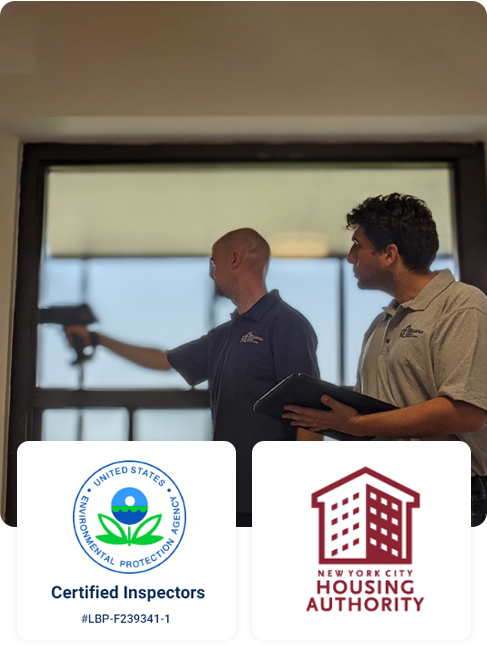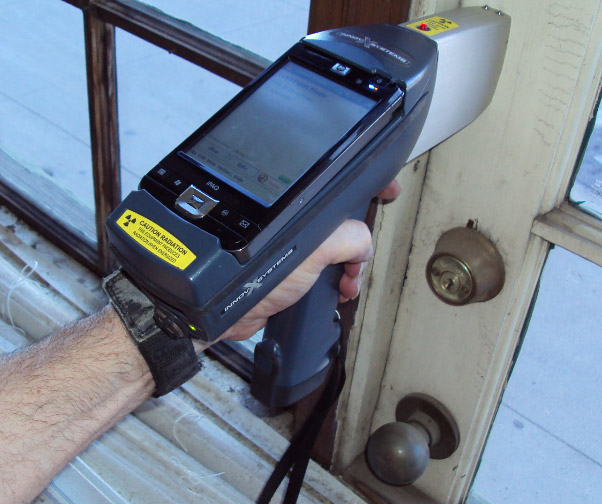Comprehensive Overview on Effective Lead Infraction Removal Techniques
In the realm of ecological security, attending to lead offenses demands a meticulous and structured approach. This thorough guide begins by highlighting the important first steps of identifying lead threats with advanced evaluation and screening methods. Strategies such as XRF analysis and dirt wipe tasting are important in pinpointing contamination resources. The guide specifies on the value of adhering to stringent safety protocols during the elimination process, including the usage of correct PPE and separating impacted areas. The subsequent sections assure to talk about post-removal confirmation and preventative methods, making certain long-lasting security and compliance. Discover the complex details that make these techniques not simply efficient but essential.
Recognizing Lead Risks
Identifying lead hazards is a critical primary step in minimizing the dangers connected with lead direct exposure. Lead, a toxic steel, can be existing in various environmental tools, consisting of paint, dirt, water, and dust. It postures severe health and wellness threats, particularly to youngsters and pregnant ladies, causing neurological damages and developing delays. Accurate identification of potential lead sources is important for efficient remediation.
The preliminary stage in recognizing lead hazards includes comprehending typical lead resources within the constructed environment. Frameworks built before 1978 are particularly prone as a result of the prevalent usage of lead-based paint during that period. Furthermore, dirt contamination can occur from weakening outside paint, commercial discharges, or historical use of leaded gas.
Another substantial resource is lead piping and plumbing fixtures, which can leach introduce alcohol consumption water. Durable goods such as toys, porcelains, and imported items might likewise include hazardous lead degrees. Significantly, job-related settings and pastimes including lead can track pollutants into homes.
Assessment and Screening
When dealing with lead threats, effective analysis and screening are vital. This essential action makes certain the identification and metrology of lead presence, therefore guiding succeeding remediation initiatives. Preliminary assessment usually involves an aesthetic examination to identify possible lead resources, such as degrading paint or polluted dust. This is matched by even more rigorous screening methods to identify the degree of contamination.

Dirt clean tasting is an additional crucial technique, particularly in property settings. By gathering examples from floorings, windowsills, and other surfaces, this method provides understandings into prospective exposure dangers. Dirt screening around building borders is vital to spot lead contamination that can pose hazards, specifically to children.
Safe Removal Treatments
Upon finishing comprehensive assessment and screening, executing risk-free elimination procedures is the next vital phase in attending to lead threats. This procedure guarantees that lead-contaminated materials are properly and safely gotten rid of, lessening danger to both employees and homeowners. The initial step entails separating the afflicted area making use of plastic sheeting and proper sealing strategies to stop the spread of lead dust.
Workers have to wear proper individual safety equipment (PPE), including respirators, gloves, and non reusable coveralls, to reduce direct exposure. Using specialized devices and damp techniques, such as wet sanding or using HEPA-filtered vacuum cleaners, decreases the diffusion of lead particles. It is vital to stay clear of dry fining sand or rough blasting, as these methods can generate hazardous lead dust.
Waste disposal is an additional vital component; all infected products must be safely gotten and classified according to EPA and local regulations. Furthermore, comprehensive cleaning of the workspace with HEPA vacuums and damp cleaning ensures the removal of recurring lead particles.
Post-Removal Verification

Confirmation of successful lead elimination, understood visit the website as post-removal verification, is vital to make certain the safety and habitability of the remediated area. This assessment guarantees that all recognized resources of lead have actually been resolved and that no noticeable indications of contamination remain.
Adhering to the aesthetic evaluation, environmental tasting is conducted. This involves gathering dust, dirt, and often water samples from the remediated area. Accredited research laboratories examine these samples to gauge lead levels, guaranteeing they fall listed below the safety and security thresholds developed by regulatory bodies such as the Epa (EPA)
Additionally, air top quality testing may be performed to discover airborne lead bits, especially in cases where considerable lead-based paint removal or renovation has taken place. The outcomes of these examinations give quantitative data confirming that the lead levels are within acceptable limits.
Ultimately, post-removal verification acts as an important checkpoint, verifying the efficiency of the lead abatement initiatives and protecting the health and wellness of residents and site visitors.
Safety Nets and Upkeep

A crucial precautionary procedure includes the use of lead-safe licensed service providers for any renovation, repair, or painting tasks. These professionals are learnt practices that reduce lead dust and debris. Additionally, keeping coloured surface areas to avoid cracking or peeling is necessary, as degrading paint can release lead bits right into the atmosphere.
Educational initiatives targeting homeowner and renters pertaining to the threats of lead and the significance of reporting any type of potential threats can further enhance preventive efforts. Regular cleansing utilizing HEPA vacuums and wet mopping strategies can considerably lower lead dust build-up.
Final Thought
In summary, effective lead infraction elimination necessitates a anonymous careful strategy incorporating complete assessment, exact screening, and stringent elimination procedures. Ongoing examinations and upkeep are essential to mitigate future lead risks, thus securing public wellness and making certain continual compliance with regulatory requirements.